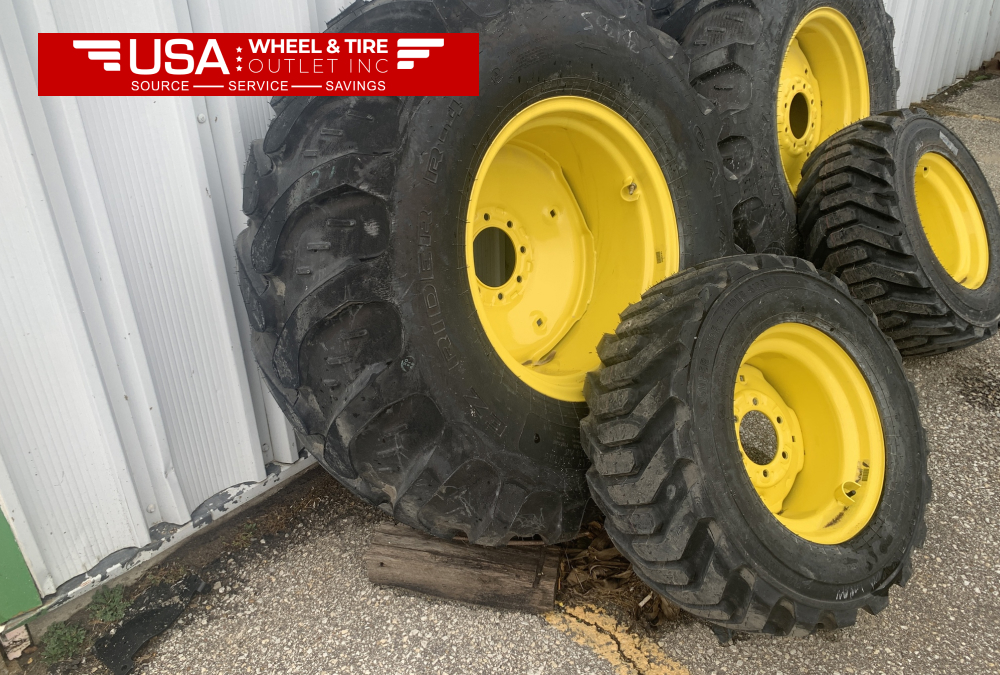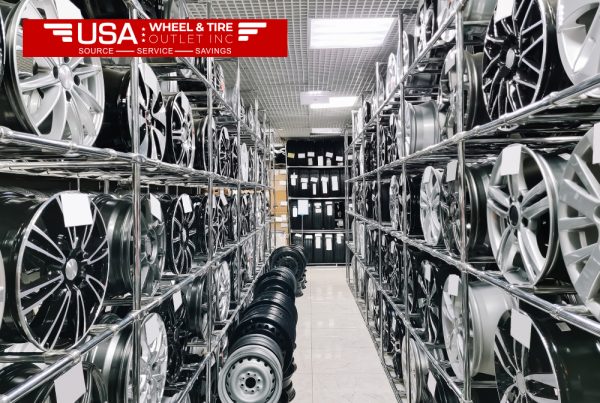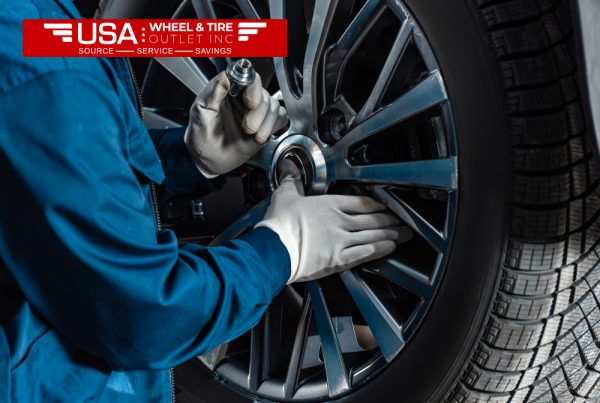Everyone’s familiar with the point that tractor tires can be among the biggest influences on agricultural productivity, and far from that, there lies an important influence on tractor capability: traction, stability, fuel efficiency, and soil health. By way of this, an understanding of the different available tractor tire tread patterns will, therefore, equip a farmer or the operator user with sufficient information to make a proper decision in choosing the right tires for his machines. We have discussed several types of tractor tire treads, application, and how to go about making a selection for some application for a given tractor associated with sources such as US Authorities USA Wheels and Tires.
Why tractor tire treads are important?
These are cosmically superficial-looking tractor tire tread patterns, though very crucial for performance. It is in a pattern where designs of treads affect that which otherwise would determine your traction with soil, compaction, and the efficiency with which you are trying to achieve your work. Proper tread pattern minimizes slippage and is likely to better handle you for your tractor and let it work efficiently enough in several working conditions.
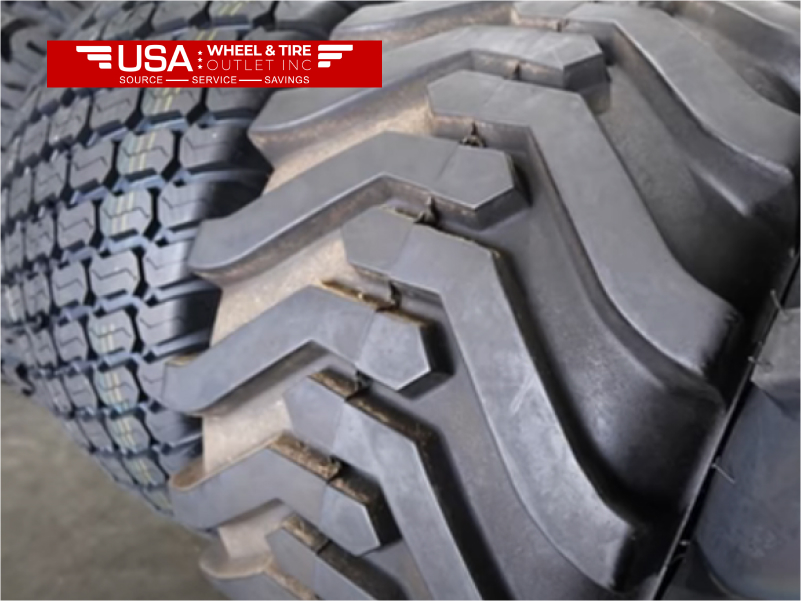
Major Roles of Tread Patterns
1. Traction: Treading is mostly the primary role of tractor tread patterns. There were designs of treads that would ensure the tractor would not slide too much as it moved across the soil.
2. Soil Conservation: Tread patterns may in some way affect how much soil gets compacted. Right treads may be chosen to reduce soil damage and therefore a healthy crop.
3. Water Dispersion: Good tread patterns that shall help in dispersing the water along the tire instead of letting it skid, so the good grip on the wet surface is developed.
4. Load Displacement: It helps in displacing the weight of the tractor since it is uniformly dispersed on the ground, which increases stability and dodges ruts.
Comparison of Tractor Tire Tread Patterns
The traction design of tractor tires is quite wide in the functions that they are to be put into. Some of the most common tractor tire tread types include the following:
1. R1 Tread Pattern-Agricultural Traction
R1 or agricultural traction tires have deep, well-spaced lugs for maximum traction on loose soils like mud. This type of tire is most appropriate to use for field work, especially in plowing and planting.
Advantages:
Gives good activity on tilling if the soils are soft or wet.
The reduction of skidding is relatively low because it gives a general efficiency and working ability in the field.
Applications:
2. R3 tread pattern (industrial traction)
It is one of the developed tread patterns for use in agricultural and industrial ground fields. An R3 pattern tends to have a shallow profile associated with a compromise between traction and ground protection.
Advantages
Applications:
Primarily for heavy-duty usage where there is light farming and construction.
3. R4 Tread Pattern
R4 tread patterns are used for industrial and construction applications. In this tire pattern, a flat surface is provided, having big, widely spaced lugs to impart excellent stability as well as friction on hard surfaces.
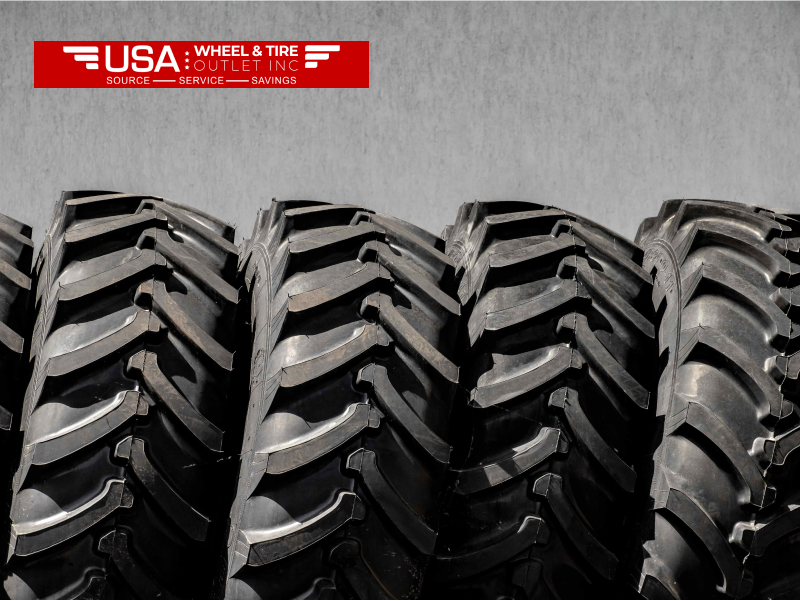
Advantages:
Uses:
Primarily applied in construction sites for building and in material handling operations
4. R1W Tread Pattern (Wider Agricultural Traction)
R1W is very aggressive compared to R1, but with bigger lugs and least soil compaction. This tread has an equal spread footprint.
Advantages
Uses:
It can be used in most farming operations, especially one that experiences sensitive soils.
Describe the kind of terrain you spend most of your working hours on. For instance, if you are going to spend much time working in muddy fields, then an R2 tread pattern would be more recommended for you. Conversely, if you are going to spend much time working on hard surfaces, then an R4 tread pattern will be the more recommended one to you.
1. Soil Conditions
Its operation on the different soils will be changed by the tread pattern. While other soils, for instance, are highly loose and drained, such as sands, they require deep lugs not to rut. Other soils that become compacted and hard require wide and flat treads.
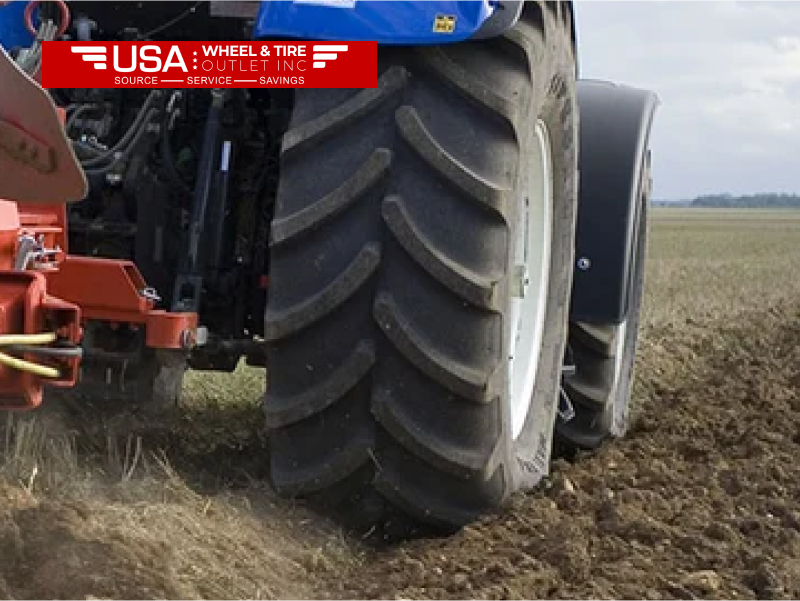
2. Load Demand
This is the weight that your tractor will carry. Heavy loads may need big tread patterns that will not disturb the ground by spreading its weight and reducing soil compaction.
3. Seasonal Changes
This is another seasonal change that might be your call-maker. For instance, you are staying in a place where there is every possibility of snowfall within the winter seasons, and R2 tires would come in handy for you at that time.
4. Brand Quality
Well, spending money on a quality brand such as USA Wheels and Tires assures you that you will get quality product that has met the set standards of the industry. Quality tires will give your tractor performance, increase its lifespan, and, above all, offer you safety as you work.
Tips on Maintaining Your Tractor Tires
Once you settle for the right tread pattern for your needs, the only key to ensuring life and performance is through proper maintenance.
1. Periodic checks
Regularly check your tires for wear patterns, cracks, and damages. These regular checks can tip you off to a problem before it actually becomes a trouble.
2. Correct Inflation
It can be the highest performance requirement of the tire pressure. The tires have to be under-pressurized while the over-pressurized lowers the traction and wear.
3. Tire Rotation
Tractor tire rotation if necessary. This makes the tire go out so evenly and expand its lifetime. Use the manufacturer’s specifications for the rotation interval.
4. Observation of Soiling Conditions
Get a feel for what’s going on across the interface between tire and soil. Time is probably getting to be pretty good to take a step back and reassess your tread patterns if you’re starting to suspect compacting too much or slipping too much.
One of the prime things that helps to maximize the benefit and efficiency of any farming operation is to understand the tractor tire tread pattern. They produce much more prolific effects on productivity when a choice is made based on the requirements mentioned above when considering any given requirement of terrain, soil conditions, or load.
Good decisions on how to make a tractor efficient basically depend on the working conditions and types of work natures. Among these brands is USA Wheels and Tires, which offers a large variety of top-notch tractor tires; each has a specific need that ensures you will find one suited to your operations.
Read Also: ATV Run Flat Tires: Can You Run with Flat Tires?
Finally, the area of efficient farming and good performance of industry will be ruled by where proper selection and care of tires exist. Proper tread patterns on tractor tires will allow movement over any obstacle, and productive as well as effective year-round working will be ensured.
FAQs
1: What are the major kinds of tractor tire tread patterns?
The major kinds of tractor tire tread patterns are as follows:
R1 (Agricultural Traction): Deep, widely spaced lug for maximum traction over soft and muddy soils.
R2 (Mud and Snow): Even deeper lug for hauling over muddy and snow- covered terrains.
R3 (Industrial Traction): Shallow tread with a balance of traction and soil protection for diverse applications.
R4 (Industrial and Construction): Flat surface with large lugs to provide maximum stability for hard surfaces.
R1W (Wider Agricultural Traction): Wider lugs that provide greater traction and less soil compaction.
2: How do I select the perfect tractor tire tread pattern according to my needs?
Factors to consider when choosing the right tractor tire tread pattern include:
Terrain Type: Muddy, Sandy, or Hard.
Soil Conditions: The type of soil varies in their reaction based on specific tread patterns and consequently can affect its ability in traction as well as compaction.
Load Requirements: The tire’s capacity to pull any given weight.
Seasonal changes: whether your work area receives snow or heavy rain.
Brand Quality: Stick to these large brands like USA Wheels and Tires for excellent quality performance.
3: How do I properly maintain the good working condition of my tractor tires?
For you to ensure that you keep on taking proper care for your tractor’s tires:
Routine Inspection: Observe cracks, and other wrecking.
Right Inflation: Inflates tires according to the required pressure so as not to experience uneven wear and loss of traction.
Tire Rotation: Where applicable, periodic rotation of the tire should take place for uniform wear on both sets of tires.
Soil interaction monitoring: One has to check how the tires are performing on different soils and change the tread pattern according to the type of soil.

